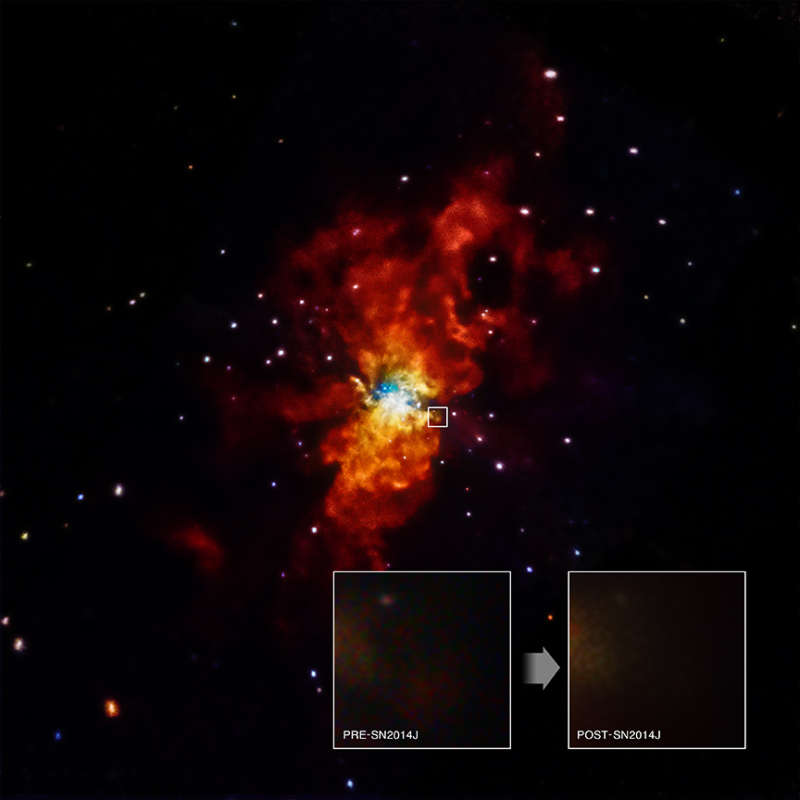
|
Explanation: Last January, telescopes in observatories around planet Earth were eagerly used to watch the rise of SN 2014J, a bright supernova in nearby galaxy M82. Still, the most important observations may have been from orbit where the Chandra X-ray Observatory saw nothing. Identified as a Type Ia supernova, the explosion of SN2014J was thought to be triggered by the buildup of mass on a white dwarf star steadily accreting material from a companion star. That model predicts X-rays would be generated when the supernova blastwave struck the material left surrounding the white dwarf. But no X-rays were seen from the supernova. The mostly blank close-ups centered on the supernova's position are shown in the before and after inset panels of Chandra's false color X-ray image of the M82 galaxy. The stunning lack of X-rays from SN 2014J will require astronomers to explore other models to explain what triggers these cosmic explosions.
|
January February March April May June July August September October November December |
| ||||||||||||||||||||||||||||||||||||||||||||||||
NASA Web Site Statements, Warnings, and Disclaimers
NASA Official: Jay Norris. Specific rights apply.
A service of: LHEA at NASA / GSFC
& Michigan Tech. U.
Based on Astronomy Picture
Of the Day
Publications with keywords: supernova - M 82
Publications with words: supernova - M 82
See also:
- APOD: 2025 July 31 Á Supernova 2025rbs in NGC 7331
- APOD: 2025 May 7 Á Galaxy Wars: M81 versus M82
- 38 Hours in the M81 Group
- APOD: 2024 April 15 Á The Cigar Galaxy from Hubble and Webb
- APOD: 2023 October 11 Á NGC 1097: Spiral Galaxy with Supernova
- APOD: 2023 August 2 Á M82: Galaxy with a Supergalactic Wind
- APOD: 2023 July 9 Á Doomed Star Eta Carinae
